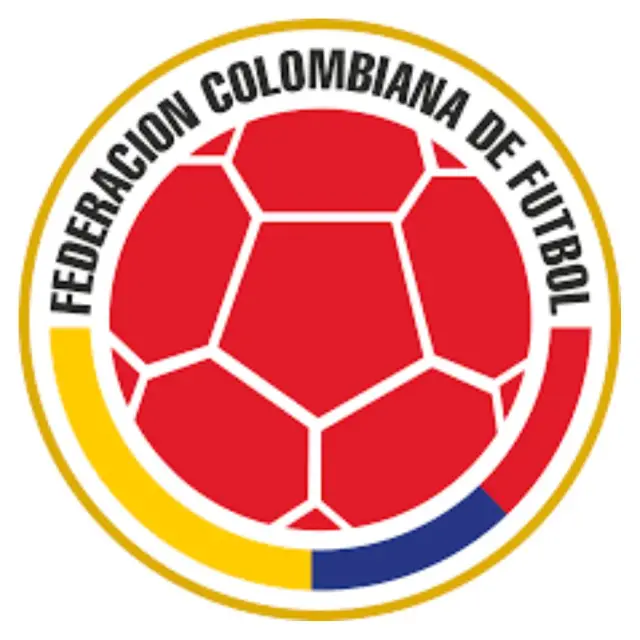The Colombian soccer team, commonly known as "La Tricolor", has been a symbol of pride and passion for Colombians throughout its history. From its humble beginnings to its recent successes on the international stage, the team has undergone a significant evolution, marked by moments of glory and challenges.
Early Years and Foundation
The Colombian Football Federation (FCF) was founded in 1924, although the team's first international participation dates back to the Central American and Caribbean Games in 1938. During these first years, the team did not have a professional structure or support. considerable, which was reflected in its results. However, participation in regional tournaments helped lay the foundation for the development of football in the country.
1960s: Early International Hits
The 1960s marked a turning point for the Colombian National Team. In 1962, the team qualified for the World Cup for the first time, held in Chile. Although they failed to advance beyond the group stage, their participation was historic, highlighting the 4-4 draw against the Soviet Union, one of the strongest teams of the time. This result demonstrated the potential of Colombian football and generated greater interest and support for the sport in the country.
1980s: The Rise of a New Generation
In the 1980s, Colombian football experienced a renaissance with the emergence of a new generation of talented players. Under the direction of Francisco Maturana, Colombia began to stand out in the South American field. In 1985, the team won its first major international title, the Copa Merconorte, and in 1987, it reached third place in the Copa América held in Argentina.
1990s: The Golden Age
The 1990s are considered the "golden era" of Colombian soccer. The team qualified for three consecutive World Cups (1990, 1994 and 1998) and reached the round of 16 at Italia 1990. This period was marked by the presence of iconic players such as Carlos Valderrama, Faustino Asprilla, Freddy Rincón and René Higuita, who took Colombia to a new level of competitiveness and international recognition.
In the 1991 Copa América, Colombia showed a solid performance, reaching the semifinals. However, the true highlight came in the 2001 Copa América, held on Colombian soil, where the team was crowned champion for the first time in its history, defeating Mexico in the final. This achievement was celebrated throughout the country and established Colombia as an emerging power in South American football.
21st Century: Ups, Downs and Resurgence
The beginning of the 21st century was a period of ups and downs for the Colombian National Team. After success in the 2001 Copa América, the team failed to qualify for the 2002 and 2006 World Cups, leading to criticism and disenchantment among fans. However, the arrival of new talent and the reorganization of the federation brought a revival.
In 2011, Colombia hired José Pékerman as technical director, who implemented a more offensive and disciplined playing philosophy. Under his leadership, Colombia qualified for the 2014 World Cup in Brazil, where it had an outstanding performance, reaching the quarterfinals for the first time in its history. James Rodríguez emerged as a global star, winning the Golden Boot as the tournament's top scorer.
World Cup 2018 and Copa América
Qualifying for the 2018 World Cup in Russia was another important milestone. Although Colombia was unable to repeat the success of 2014, only managing to reach the round of 16, its performance was competitive. In the 2019 Copa América, the team showed flashes of its potential, reaching the quarterfinals before being eliminated by Chile in a dramatic penalty shootout.
The Post-Pékerman Era and the Road to Qatar 2022
After the departure of José Pékerman in 2018, Carlos Queiroz took over as technical director, followed by Reinaldo Rueda in 2021. The qualification process for the 2022 World Cup in Qatar was complicated and full of challenges, including the coronavirus pandemic. COVID-19 that affected the playoffs. Despite their efforts, Colombia failed to qualify for the tournament, which generated deep reflection on the future of the team and the need for renewal.
Despite not having qualified for Qatar 2022, the Colombian National Team has a new generation of players who promise to return the team to the elite of world football. Players like Luis Díaz, Juan Fernando Quintero and Duván Zapata have demonstrated their talent in European leagues and are called to lead the next cycle of the national team.
The hiring of Néstor Lorenzo as the new technical director in 2022 brought fresh air and new hope. Under his leadership, Colombia has begun to rebuild with a view to the 2024 Copa América and the qualifiers for the 2026 World Cup. Expectations are high, and Colombian fans are looking forward to the national team once again taking center stage in international tournaments. .
The 2024 Copa América is presented as a crucial opportunity for the Colombian National Team to demonstrate its progress and aspire to another continental title. With a rejuvenated squad and led by emerging figures, the team prepares to face its South American rivals with the hope of repeating the success of 2001.
The road to the tournament has been marked by a series of friendlies and regional competitions in which Colombia has shown a mixed bag of results. However, the team's focus and determination, combined with the unconditional support of its fans, predict a competitive performance in the Copa América.
As the team prepares for future challenges, including the 2024 Copa América and the upcoming World Cup qualifiers, the spirit and hope of millions of Colombians continue to propel the team to new heights. The history of the Colombian National Team continues to be written, and fans look forward to the next chapters full of emotion and achievements.
